Description
The Blackbelly Trigger, scientifically known as Rhinecanthus verrucosus, also goes by the name Bursa Trgger. They can reach a maximum size of approximately 10 inches (25 cm) in length. It has a distinct appearance characterized by a robust body, a large head, and a unique colour pattern. The body is predominantly off white displaying elegant multicolour stripes and patches.
Behaviour:
Blackbelly Triggers are known for their puppy-like character and intelligence. They display individual personalities and can become quite interactive with their owners. Their swimming motion is mesmerizing to observe as they gracefully glide through the water. These fish exhibit a curious nature and are often seen exploring their surroundings.
Taxonomy:
The Blackbelly Trigger, or Bursa Trigger, belongs to the genus Rhinecanthus and the family Balistidae. It is closely related to other triggerfish species within the same family. The etymology of the genus name “Rhinecanthus” is derived from the Greek words “rhinos” (nose) and “akantha” (thorn), referring to the spines on the fish’s head.
Natural Habitat:
In their natural habitat, Blackbelly Triggers can be found in tropical and subtropical waters of the Indo-Pacific region. They inhabit coral reefs and rocky areas with abundant hiding spots. These areas provide them with protection and suitable environments for foraging.
Keeping Blackbelly Triggers Healthy:
Blackbelly Triggers require a moderate level of care and can be moderately challenging to keep. Providing them with a spacious aquarium with plenty of hiding places, rock formations, and a sandy substrate is essential. Regular monitoring of water parameters such as temperature, salinity, pH, and ammonia levels is necessary to maintain a healthy environment.
Special Requirements and Feeding:
Blackbelly Triggers have powerful jaws and teeth adapted for crushing hard-shelled prey. Their diet should consist of a variety of meaty foods, including small fish, crustaceans, and mollusks. It is important to provide them with a balanced diet that includes both protein-rich foods and vegetable matter. Offering occasional live or frozen foods can help stimulate their natural feeding behaviour.
How Many Should I Keep:
Blackbelly Triggers are best kept singly or in mated pairs, as they can be territorial and aggressive towards conspecifics. Keeping more than one Blackbelly Trigger in the same tank may result in territorial disputes and potential harm to other tankmates.
Lighting Preference:
Blackbelly Triggers do not have specific lighting preferences and can adapt to a range of lighting conditions, including moderate to high intensity lighting.
Suitable Tank Mates:
When selecting tank mates for Blackbelly Triggers, it is important to choose species that are compatible with their territorial nature. Avoid keeping them with smaller, more docile fish or delicate invertebrates that may become targets of aggression. Suitable tank mates can include larger, robust fish species that can hold their own in the aquarium.
Reproduction in the Wild:
In the wild, Blackbelly Triggers, scientifically known as Rhinecanthus verrucosus, engage in an intriguing courtship behaviour known as the “wiggle dance.” During this display, the male triggers swim in a zigzag pattern while shaking their bodies and fins in a rhythmic manner. This behaviour is believed to attract females and signal readiness to mate.
Breeding, Bursa Trigger, Rhinecanthus verrucosus:
- Set-up:
Breeding Blackbelly Triggers in captivity requires a well-maintained aquarium with appropriate water conditions and sufficient space for courtship and spawning behaviours. The breeding tank should have suitable hiding places and a sandy substrate for egg deposition.
- Courtship/Spawning:
The courtship process begins with the male performing the wiggle dance to attract a female. Once the female is enticed, she and the male engage in a circular swimming pattern, culminating in the release of eggs and sperm into the water column. The fertilized eggs are transparent and buoyant.
- Rearing:
After spawning, it is crucial to remove the eggs from the main tank and transfer them to a separate rearing tank. The eggs should be kept in a well-oxygenated environment with gentle water movement. Within a few days, the eggs hatch into larvae, which require specialized rearing techniques involving appropriate nutrition and water parameters.
Sexual Dimorphism:
Sexual dimorphism in Blackbelly Triggers is not pronounced. However, males may exhibit slightly more vibrant colouration, including intensified blues and yellows, compared to females. Males also tend to be slightly larger than females.
Distribution:
The Blackbelly Trigger, Rhinecanthus verrucosus, is naturally distributed in the tropical and subtropical waters of the Indo-Pacific region. It can be found in areas such as the Red Sea, the Maldives, the Philippines, Indonesia, and Australia. While captive-bred and line-bred strains of Blackbelly Triggers are available in the aquarium trade, the original fish come from their natural range in the wild.
Summary:
The Blackbelly Trigger, scientifically known as Rhinecanthus verrucosus, is a fascinating fish species known for its distinctive appearance and playful behaviour. It engages in a captivating wiggle dance during courtship and exhibits interesting breeding behaviours. Breeding Bursa Triggers in captivity requires specific tank set-up, courtship rituals, and careful rearing of the eggs and larvae. While not displaying significant sexual dimorphism, males may exhibit more vibrant colouration. Found in the Indo-Pacific region, Bursa Triggers are a remarkable addition to aquariums, providing both visual appeal and unique behavioural characteristics.
The Fish pictured here are representative only and the livestock you receive may vary in pattern, coloration, and shape.

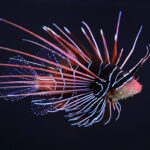
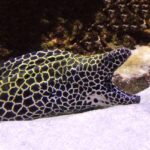



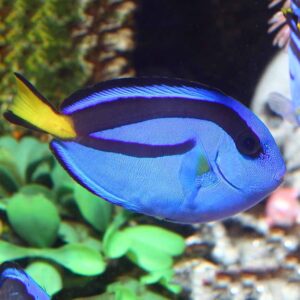
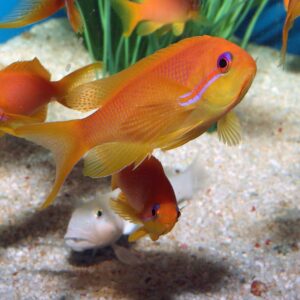
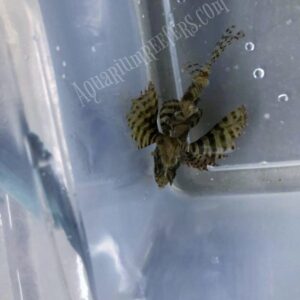
Reviews
There are no reviews yet.